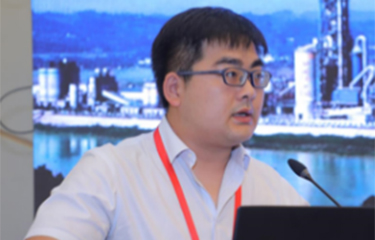Tongwei, a dominant force in China’s aquafeed sector, has pledged to make a huge investment into recirculating aquaculture system (RAS) shrimp farming.
Liang Qinlang, the director of Tongwei Fishery Technology’s research and development department and the director of its fishery engineering research institute, said the company is investing CNY 1.2 billion (USD 164.2 million, EUR 155 million) in a 200,000-square-meter RAS shrimp farm in Dongying, Shandong province, China, with the plan of eventually raising 2,000 metric tons (MT) of shrimp annually at the site.
The Dongying farm is the first large-scale RAS shrimp project undertaken as part of Tongwei’s larger dive into the sector, which began in 2019 with the founding of the Tongwei Nongfa Circulating Water Aquaculture Project. That project built pilot farms in several locations in China, including a hatchery co-built with Bohai Seafood in Binzhou, a 1,000-square-meter shrimp-breeding R&D facility in Chengdu, and a smaller test facility in Dongying.
“Clearwater RAS shrimp farming has many advantages, such as efficient resource utilization, water saving, environmental protection, easy replication, and controllable water quality,” Qinlang told Fish First magazine. “At present, multiple batches of circulating water shrimp breeding experiments have been successfully carried out in the scientific research base, and the technology, system equipment, and breeding have been verified and optimized. In the future, in-depth research will be carried out from aspects such as energy consumption, breeding cycle, and light impact.”
At the behest of its chairman, Liu Hanyuan, Tongwei is planning a broader expansion into shrimp RAS in both coastal and inland areas in China, with the goal of addressing a predicted national gap in supply for shrimp and other seafood products through the use of high-tech, “intelligent and unmanned” farming systems, according to Qinlang.
“Currently, we are also investigating other coastal areas based on market demand, water sources, transportation, logistics distribution centers,” Qinlang said.
Tongwei is one of the largest aquafeed producers in China and is also a major player in the production of solar panels. It has expanded its aquaculture and downstream operations in recent years. Qinlang said shrimp is a logical species for the company to target, given the high demand for it and the lack of large-scale development of technological solutions to advance land-based, intensive farming.
“In the future, shrimp farming will develop in the direction of producing high-quality shrimp and ensuring stable and continuous output. Circulating water shrimp farming can reduce dependence on resources as much as possible and achieve efficient resource utilization,” he said. “Compared with traditional farming models, circulating water shrimp farming requires less water and is also in line with the requirements of environmental protection policies. Moreover, the circulating water shrimp farming model is easier to copy and more controllable. Through digital management, the requirements for manual experience can also be reduced accordingly [and] unmanned farming may be realized in the future.”
However, Qinlang said significant advances still must be made to ensure the viability of Tongwei’s push into land-based shrimp farming.
“The farming process requires more refined management, and there are currently not many examples in the industry that can be used for reference. The rapid development of facility fisheries requires the coordinated development of supporting industrial chains, such as seeds suitable for recirculating aquaculture, special feed, cost-effective equipment, systems, etcetera,” he said. “However, while circulating aquaculture has some unique advantages, it also inevitably has some shortcomings: First, there are still many technical difficulties to be overcome, and the industry lacks a corresponding professional team that understands both machinery and breeding. However, judging from the mainstream situation, the circulating aquaculture model has the advantages of being easy to replicate and is one of the more potential models among the existing breeding models.”
Photo courtesy of China Marine Fisheries Science and Food Production Process Functional Laboratory







